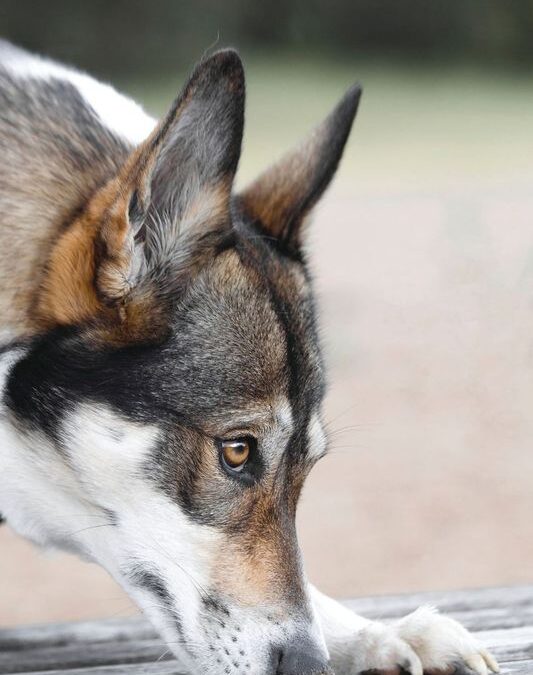Many of us will be pondering a Valentine’s gift for our beloved and be considering a beautiful bunch of heavily scented roses or a favourite perfume. The connection between scent and attraction has long been recognised and we now know the brain’s olfactory system which deals with scent and smells is closely linked to the limbic system, which governs memories, desires, and emotions. Smells have the power to invoke feelings as polarised as those associated with uneasiness and disgust, to feelings of wellbeing associated with the familiar and what makes us happy. Scents guide us, often subconsciously, in all kinds of decision-making.
For dogs, cats and other animals, the role of scent is even more central and recognising this may help us to make more sense of some of their more troublesome behaviours.
Top of the list of ‘bad’ behaviours is that of urinating inside the home. Both cats and dogs may do this and it may be a problem that drives owners to despair.
Puddles or spray
In general, the first consideration is volume of urine. Large puddles point to an animal that has not been properly housetrained, has an undiagnosed medical problem, or is losing control out of panic. Some very small breeds have underdeveloped bladders and cannot hold for hours. Cats may not have enough litter trays, or the trays are in the wrong place (you would be surprised how many people put a cat litter next to the animal’s food bowl).
Once the dog has been vet checked, I usually recommend a return to ‘baby puppy’ housetraining, along with a complete and thorough clean-up to remove old residual urine odours (using a proprietary enzymatic spray). The cleaning must be sustained throughout training, as even tiny droplets of urine can prompt the dog to void there again- a reflexive response driven by smell Owners can also use a combination of canine belly bands and knickers, to curtail repeat urination.
Marking
If the amount of urine found inside the home is of a smaller quantity and appears on vertical surfaces, this points to marking. In short, the animal is finding it necessary to make that area smell of him or her (female animals also mark). Quite often, this suggests underlying conflict or fear, but it can also be an expression of interest/would-be possession. There may be tension between pets living together and one pet is trying make the area smell more strongly of themselves, perhaps to indicate ‘belonging’. For others, it may be staking out territory and even an attempt to intimidate or ‘oust’ the ‘rival.’ If anything, cats are even more prone to the territorial aspect, and repeatedly squirting scent makes the point without engaging in outright war.
Dogs or cats that are freaked out by something in the home- perhaps building work or moving furniture or even new human arrivals, may mark to regain a sense of familiarity. Given the opportunity, a few may rush upstairs and urinate on their owner’s bedding, mingling scents as a self-comforter. Others will mark at thresholds when left alone, or at night when they sense potential intruders in the garden. Marking is simply the animal’s way of creating a boundary but using scent instead of fencing.
For all urination issues the best way forward is a thorough review with a behaviour expert, identifying what is motivating the animal’s behaviour before devising a tailored plan.
Leonie St Clair | www.londondogstraining.co.uk

